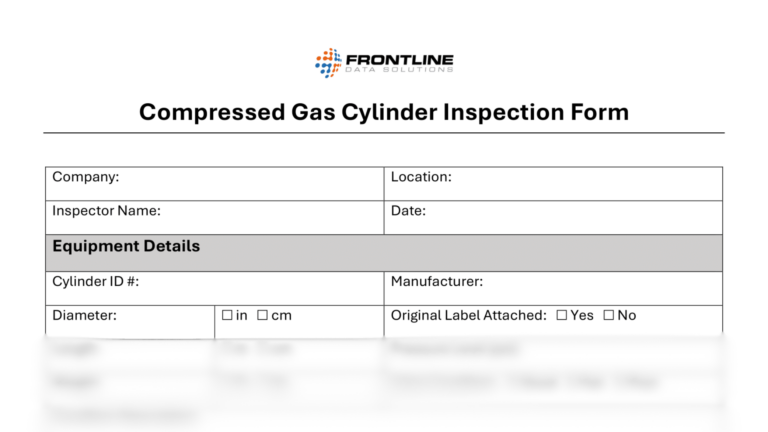Between 2011 and 2017, hydrogen sulfide especially from the oil and gas industry was the second leading cause of inhalation deaths in the United States. It is highly toxic if inhaled, and it can have a severe effect on your health. Hydrogen sulfide is 19% heavier than air and collects in low-lying areas and confined spaces. It is highly flammable and may spontaneously ignite at hot temperatures, causing an explosion.
The toxicity and explosive nature of hydrogen sulfide accumulation means that you need to actively protect against it. Hydrogen sulfide in the oil and gas industry can cause widespread illnesses, death, and property damage if not dealt with promptly.
Hydrogen sulfide formation in the oil and gas industry
Hydrogen sulfide (H2S) is an extremely hazardous gas that smells like rotten eggs and is colorless, flammable, and soluble in water. It occurs naturally as crude petroleum and natural gas. H2S is also a byproduct of the breakdown of organic matter and human waste (e.g., sewage).
It is heavier than air and can collect in low-lying and enclosed, poorly ventilated areas such as basements, manholes, sewer lines, and underground telephone/electrical vaults. At low levels you can detect H2S by its scent alone. With continuous low-level exposure, however, you lose your ability to smell the gas even though it is still present.
At high concentrations, you can lose your ability to smell the gas instantly. This is why H2S is known as “The Silent Killer.” You need to proactive about controlling hydrogen sulfide in oil and gas operations.
Responsibility of oil and gas companies and employees
Each person involved in company operations has their own set of responsibilities concerning H2S safety and compliance measures. And most of these responsibilities fall on the safety team. If you work in a leadership position, you should consider what you’re doing to prevent H2S accumulation. See below for the main obligations of the company and its employees to protect against hydrogen sulfide.
Company responsibilities
- Protecting workers from H2S exposure
- Finding H2S hazards
- Providing proper annual training for all workers
- Establishing safe work practices relating to H2S
- Monitoring levels of H2S throughout the workplace or locations
- Providing proper PPE specifically designed to shield workers from the effects of H2S
- Performing a check for ignition sources in the area before starting any potentially hazardous work
- Supplying at least one worker who is qualified to perform first aid and CPR for H2S victims
Worker responsibilities
- Attending yearly training and safety meetings
- Using controls and following safe work practices
- Using required PPE and personal monitors
- Reporting exposure incidents
- Using SWA when necessary
- Making sure that work areas, vents, and purge lines are functioning and ventilated before work begins
Sources of hydrogen sulfide
H2S does occur naturally, primarily as the result of organic material decomposition at the hands of bacteria. Areas in nature where this can occur are within low oxygen environments such as swamps and polluted water. H2S also forms as a part of natural gas, petroleum, sour crude oil (oil with more than 0.05% sulfur content), sulfur deposits, volcanic gases, and sulfur springs.
But H2S may also build up during industrial processes. Depending on your job within the industry, you need to know all the possibilities of H2S exposure while performing your duties. H2S exposure is a major concern in the petroleum industry, especially at oil and natural gas wells, refineries, natural gas plants, and pipelines.
Some common areas where hydrogen sulfide accumulates in the oil and gas industry are:
- Shale shaker area
- Circulation fluid treatment area
- During tripping procedure
- Wellhead
- Cellar
- Drilling floor
You may see H2S listed in chemical manuals as sulfuretted hydrogen, hydrogen sulfide, hydro sulfuric acid, or dihydrogen sulfide. The EPA (Environmental Protection Agency) classifies H₂S as hazardous waste due to its toxicity and measures its concentration in parts per million (ppm) or percentages.
H2S reacts with strong oxidizers, bleach, and hydrogen peroxide to cause fire, explosions, or metal damage. It produces toxic SO2 gas when burned. This substance also forms metal sulfides that could spontaneously ignite when exposed to air. When dissolved in water, H2S forms a weak acid that corrodes metals such as steel, carbon steel, copper, silver, brass, and bronze.
Exposure to hydrogen sulfide
Exposure to H2S can occur through inhalation or skin contact. The most dangerous type of exposure to your health is inhalation, which at elevated levels can cause death. Skin absorption is another common concern stemming from exposure to compressed liquid. The industry-accepted exposure level is 10 ppm (parts per million).
If you inhale hydrogen sulfide, the chemical affects your eyes, nose, brain, lungs, and the nerve pathways that connect them. H2S impairs the part of your brain that controls your breathing, and it can cause you to stop breathing depending on the gas concentration and length of your exposure period.
Here are common stages of hydrogen sulfide exposure (by ppm):
- 1 ppm: You may be able to smell the H2S odor, a “rotten egg” smell.
- 10 ppm: Your eyes and airways become irritated after an hour of exposure.
- 20 ppm: Headaches, nausea, vomiting, coughing, and difficulty breathing may occur.
- c
- 700 ppm: Unconsciousness occurs instantly, breathing stops, and you will die if not rescued right away.
- 1,000 ppm: Instant unconsciousness and permanent brain damage occur, leading to death.
Free form!
Use this simple form to document all your compressed gas cylinder inspections.
Depending on your overall health, exposure to H2S may make you more sensitive to its effects. Smoking, drinking alcohol, or taking prescription medications or illicit drugs can affect what happens when exposure occurs. Repeated exposure to H₂S can increase your sensitivity to its effects.
Safety processes to combat the risk of hydrogen sulfide
Effectively communicating the hazards of hydrogen sulfide is extremely important. OSHA requires warning signs to mark contaminated areas. Each warning sign corresponds to the concentration of hydrogen sulfide that could occur in a particular area. They are color-coded so that you can figure out the level of hazard that is classified by API conditions:
- A ‘no hazard’ condition does not require a flag.
- API Condition (low hazard): H2S ppm is less than 10 and the H2S detector flag color will be green. Safety equipment needs to be readily accessible.
- API Condition II (medium hazard): H2S ppm is between 10 and 30, and the H2S detector flag color will be yellow. Audible and visual alarms must be in place, safety equipment must be readily accessible, and an oxygen resuscitator must be present.
- API Condition III (high hazard): H2S ppm is higher than 30. Enact emergency procedures.
Companies work from an extensive list of engineering controls to keep employees safe from hydrogen sulfide exposure. Most operations control H₂S levels in the air using local exhaust systems or natural ventilation. They use burning and flaring vent lines when concentrations may exceed 15 ppm.
Administrative controls include proper work procedures and practices that reduce the risk of H₂S exposure. Having proper procedures in place and conducting the proper training can reduce workplace accidents. This should be a top goal of any company within the oil and gas industry who wants to protect their workforce from the harmful effects of hydrogen sulfide.




